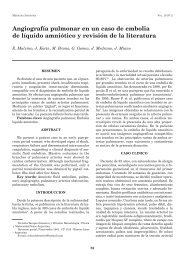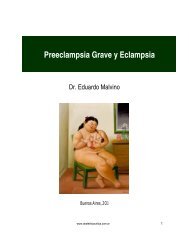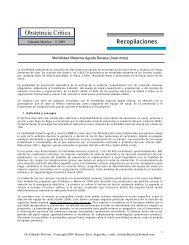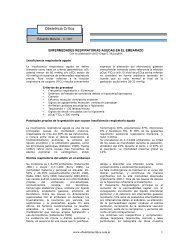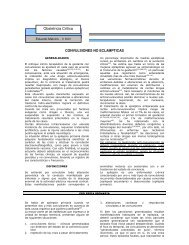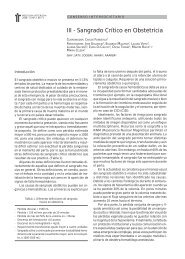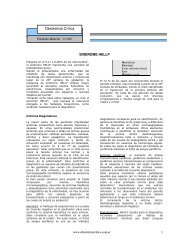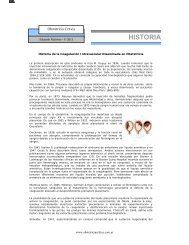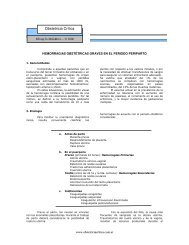cohort study of GBS-positive, penicillin-allergic obstetric patients who delivered atour institution from 2004 through 2005 (N=233). Medical records were analyzedfor type of delivery, gestational age at delivery, antimicrobial sensitivity testing,and antibiotics administered. Antimicrobial sensitivity testing and appropriateprophylactic antibiotic choice were analyzed. "Appropriate antibiotic choice" wasdefined using the 2002 CDC guidelines for GBS prophylaxis. Women with eithera scheduled cesarean delivery or a preterm delivery were excluded fromanalyses. Data were analyzed using Stata 9.0. RESULTS: Overall, 95% (95%confidence interval [CI] 91-97%) of GBS-positive, penicillin-allergic womenreceived antibiotic prophylaxis and only 16% (95% CI 11-21%) of patientsreceived an appropriate antibiotic. The majority of women who were givenantibiotics received clindamycin (83%, 95% CI 77-87%); however, antimicrobialsensitivity testing was performed in only 11% (95% CI 9-17%) of patients. Morewomen received an appropriate antibiotic in 2005 than in 2004 (20% comparedwith 11%, P=0.11). Although the study was underpowered to evaluate themagnitude of increase, the overall prevalence of appropriate antibioticadministration in 2005 was still only 20% (95% CI 13-28%). CONCLUSION:Adherence to the 2002 CDC guidelines for GBS prophylaxis in penicillin-allergicwomen is far from optimal. Improvements are necessary in obtainingantimicrobial sensitivity testing and choosing an appropriate antibiotic for GBSpositivewomen with a reported penicillin allergy. LEVEL OF EVIDENCE: II.Acta Obstet Gynecol Scand. <strong>2008</strong>;87(3):260-71.Prevalence of maternal group B streptococcal colonisation in Europeancountries.Barcaite E, Bartusevicius A, Tameliene R, Kliucinskas M, Maleckiene L,Nadisauskiene R.Department of Obstetrics and Gynaecology, Kaunas University of Medicine,Lithuania. eglebarcaite@yahoo.comBACKGROUND: Group B streptococcus (GBS) is a leading cause of neonatalsepsis in many industrialised countries. However, the burden of perinatal GBSdisease varies between these countries. We undertook a systematic review todetermine the prevalence of maternal group B streptococcal colonisation, one ofthe most important risk factor for early onset neonatal infection, and to examinethe serotype distribution of the GBS strains isolated and their susceptibility toantibiotics in European countries. METHODS: We followed the standardmethodology for systematic reviews. We prepared a protocol and a form for dataextraction that identifies key characteristics on study and reporting quality. Thesearch was conducted for the years 1996-2006 including electronic, handsearching and screening of reference lists. RESULTS: Twenty-one studiespresented data on 24,093 women from 13 countries. Among all studies, GBSvaginal colonisation rates ranged from 6.5 to 36%, with one-third of studiesreporting rates of 20% or greater. The regional carriage rates were as follows:Eastern Europe 19.7-29.3%, Western Europe 11-21%, Scandinavia 24.3-36%,and Southern Europe 6.5-32%. GBS serotypes III, II and Ia were the mostfrequently identified serotypes. None of the GBS isolates were resistant to
penicillin or ampicillin, whereas 3.8-21.2% showed resistance to erythromycinand 2.7-20% showed resistance to clindamycin. CONCLUSION: Although thereis variation in the proportion of women colonised with GBS, the range ofcolonisation, the serotype distribution and antimicrobial susceptibility reportedfrom European countries appears to be similar to that identified in overseascountries.Am J Obstet Gynecol. <strong>2008</strong> Mar 21 [Epub ahead of print]Acute hyperlipidemic pancreatitis in pregnancy.Crisan LS, Steidl ET, Rivera-Alsina ME.Methodist Health System, Dallas, TX.BACKGROUND: Pancreatitis in pregnancy remains a rare event and is mostoften associated with gallstone disease. Hyperlipidemic gestational pancreatitisusually occurs in women with a preexisting abnormality of the lipid metabolismand poses particular problems in diagnosis and clinical management. CASES:We describe 5 patients with acute episodes of pancreatitis during pregnancycaused by hyperlipidemia. CONCLUSION: Acute pancreatitis in pregnancycauses significant morbidity. Even though it is often associated with gallstones,we describe 5 cases in which the etiology of the pancreatitis was maternalhyperlipidemia. Etiology, diagnosis, and management will be discussed.Aust N Z J Obstet Gynaecol. <strong>2008</strong> Apr;48(2):130-6.Making pregnancy safer in Australia: The importance of maternal deathreview.Kildea S, Pollock WE, Barclay L.Graduate School for Health Practice, Institute of Advanced Studies, CharlesDarwin University, Darwin, Northern Territory.Australia is one of the safest countries in the world to birth. Because maternaldeaths are rare, often the focus during pregnancy is on the well-being of thefetus. The relative safety of birth has fostered a shift in the focus of maternalhealth, from survival, to the model of care or the birth experience. Yet women stilldie in Australia as a result of child bearing and many of these deaths areassociated with avoidable factors. The purpose of this paper is to outline thematernal death monitoring and review process in Australia and to present toclinicians the salient features of the most recently published Australian maternaldeath report. The notion of preventability and the potential for practice to have aneffect on reducing maternal mortality are also discussed.J Reprod Med. <strong>2008</strong> Jan;53(1):67-9.Extensive cervical prolapse during labor: a case report.Lau S, Rijhsinghani A.Division of Maternal-Fetal Medicine, Department of Obstetrics and Gynecology,University of Iowa Hospitals and Clinics and College of Medicine, 200 HawkinsDrive, Iowa City, IA 52242-1080, USA.BACKGROUND: An extensive, irreducible cervical prolapse during pregnancy isa rare condition and can lead to various complications, including severe cervical
- Page 1 and 2: Obstetricia CríticaEduardo Malvino
- Page 3 and 4: gestational age at delivery, Apgar
- Page 5 and 6: Maternal risk factors associated wi
- Page 7 and 8: exclusive categories: 1) bleeding r
- Page 9 and 10: Division of Obstetrics and Gynecolo
- Page 11 and 12: as uncommon as primary synovial sar
- Page 13 and 14: Cardiac Troponin I Elevation After
- Page 15 and 16: significant increase in carbohydrat
- Page 17 and 18: of one per 1500 pregnant women. Cal
- Page 19 and 20: Background: To investigate the rela
- Page 21 and 22: PowerLab hardware unit and Chart v3
- Page 23 and 24: Prophylactic antibiotics for the pr
- Page 25 and 26: years old (n = 23,921). Univariate
- Page 27 and 28: five women uses FDA C, D and X drug
- Page 29 and 30: and complicated. CONCLUSION: Irresp
- Page 31 and 32: clinically effective. Nevertheless,
- Page 33 and 34: Obstetrics and Gynecology Departmen
- Page 35: Pregnancy-induced severe gestationa
- Page 39 and 40: Abetalipoproteinemia complicating t
- Page 41 and 42: case of acute abdominal pain, abdom
- Page 43 and 44: Callaway LK, Lawlor DA, McIntyre HD
- Page 45 and 46: ketoacidosis during induction of la
- Page 47 and 48: and low platelets (HELLP) syndrome.
- Page 49 and 50: Division of Reproduction and Endocr
- Page 51 and 52: simulation center, and to teamwork
- Page 53 and 54: significantly associated with psori
- Page 55 and 56: episiotomy and prophylactic oxytoci
- Page 57 and 58: ecent obesity epidemic has had a pr
- Page 59 and 60: guidelines in 2002. However, the di
- Page 61 and 62: need for intensive neonatal care, h
- Page 63 and 64: mEq/l) metabolic acidosis. Other et
- Page 65 and 66: Acta Obstet Gynecol Scand. 2008;87(
- Page 67 and 68: etrospective review of pregnancies
- Page 69 and 70: Maternal obesity and pregnancy comp
- Page 71 and 72: interval 3.78-5.30) and severe obst
- Page 73 and 74: of GDM. Methods: 1,662 pregnant wom
- Page 75 and 76: Registers. POPULATION: All pregnant
- Page 77 and 78: J Reprod Med. 2008 May;53(5):365-8.
- Page 79 and 80: egarding cervical cancer screening
- Page 81 and 82: College of Surgeons in Ireland, Dub
- Page 83 and 84: maternal morbidity has increased bo
- Page 85 and 86: increased uterine activity was rela
- Page 87 and 88:
options.Journal of Perinatology adv
- Page 89 and 90:
atio, 1.73; 95% CI, 1.11-2.69). Thi
- Page 91 and 92:
discharge at site of perineal repai
- Page 93 and 94:
Thirty-one other patients refused t
- Page 95 and 96:
Department of Obstetrics and Centre
- Page 97 and 98:
developed any new problems. CONCLUS
- Page 99 and 100:
It seems to be safe to continue bre
- Page 101 and 102:
colonization in a subsequent pregna
- Page 103 and 104:
Crude and adjusted odds ratios were
- Page 105 and 106:
the subsequent development of ESRD.
- Page 107 and 108:
Acta Obstet Gynecol Scand. 2008 Sep
- Page 109 and 110:
OBJECTIVE: To investigate pregnancy
- Page 111 and 112:
OBJECTIVE: To compare the perinatal
- Page 113 and 114:
exceptionally rare. CASE: A 23-year
- Page 115 and 116:
CONCLUSION: This case demonstrates
- Page 117 and 118:
peripartum hysterectomy included ce
- Page 119 and 120:
BMJ. 2008 Sep 8;337:a1397. doi: 10.
- Page 121 and 122:
Lancet. 2008 Sep 17. [Epub ahead of
- Page 123 and 124:
Obstet Gynecol. 2008 Oct;112(4):951
- Page 125 and 126:
Additionally, the effects of distur
- Page 127 and 128:
analyzed. Initial echocardiographic
- Page 129 and 130:
pathologic or anatomically anomalou
- Page 131 and 132:
Eur J Obstet Gynecol Reprod Biol. 2
- Page 133 and 134:
chorioamnionitis; and (3) in contra
- Page 135 and 136:
underlying conditions related to st
- Page 137 and 138:
third trimester of pregnancy.BMJ. 2
- Page 139 and 140:
Texas Health Science Center, Housto
- Page 141 and 142:
preterm birth before 34 weeks (P
- Page 143 and 144:
cases. Most patients (91%) received
- Page 145 and 146:
Ultrasound Obstet Gynecol. 2008 Nov
- Page 147 and 148:
Maggard MA, Yermilov I, Li Z, Magli
- Page 149 and 150:
Clinical and Population Health, Per
- Page 151:
the biologic mechanism is unclear,



